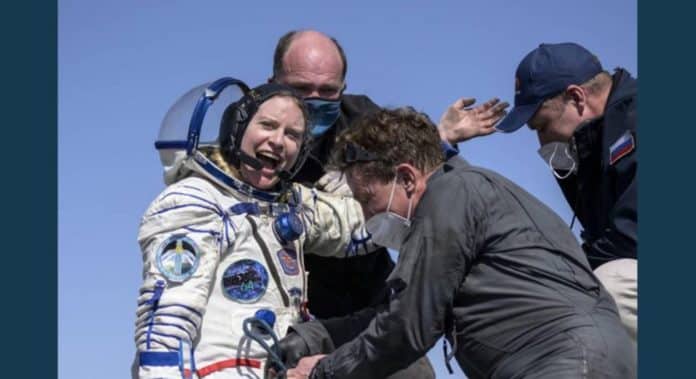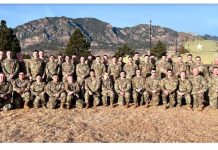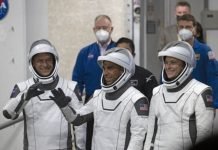
April 17 (UPI) — NASA astronaut Kate Rubins, and Russian cosmonauts Sergey Ryzhikiov and Sergey Kud-Sverchkov landed on Earth on Saturday after a half-year International Space Station mission.
They departed the station in their Soyuz MS-17 spacecraft at 9:34 p.m. EDT Friday and landed safely under parachutes at 12:55 a.m. EDT Saturday in Kazakhstan after spending 185 days in space, NASA announced.
Ryzhikiov and Kud-Sverchkov are slated to return to their training base in Star City, Russia. Rubins is scheduled to fly home to Houston.
The trio on the Expedition 64 mission took off in a Soyuz rocket on October 14 from Kazakhstan to the International Space Station.
The six-month mission on the orbiting microgravity laboratory included work on hundreds of biology, biotechnology, physical science and Earth science experiments during their six months, according to NASA.
The trio welcomed in November Crew -1 SpaceX Crew Dragon Resilience NASA astronauts Michael Hopkins, Victor Glover, Shannon Walker and Japan Aerospace Exploration Agency astronaut Soichi Noguchi aboard the flight.
Rubins, a flight engineer, completed two spacewalks alongside Glover and Noguchi, bringing her total to four spacewalks in her two spaceflights, according to NASA, which also noted that Rubins logged 300 days across her two spaceflights, the fourth most days in space by a U.S. female astronaut.
Rubins, who has a doctorate in cancer biology from Stanford University Medical School, was also aboard the first test flight of the then-new Soyuz MS spacecraft that launched to the ISS in July 2016, according to NASA.
On her first flight, she became the first person to sequence DNA in space, eventually sequencing over 2 billion base pairs of DNA in a series of experiments to analyze sequencing in microgravity.
She also worked on an experiment on how changes in gravity affect cardiovascular cells, which could aid screening measures to predict cardiovascular risk prior to spaceflight.
The voyage was the second spaceflight for Ryzhikov and the first for Kud-Sverchkov.
When the trio left the station, Expedition 65 officially began with NASA astronaut Walker of SpaceX Crew-1, serving as station commander, marking the first time a Houston native has done so, NASA noted.
Last week, NASA’s Mark Vande Hei, and cosmonauts Oleg Novitskiy and Pyotr Dubrov joined the trio and SpaceX Crew-1 that arrived in November at the International Space Station.
On Thursday, the launch of NASA’s SpaceX Crew-2, composed of NASA astronauts Shane Kimbrough and Megan McArthur, European Space Agency astronaut Thomas Pesquet, and JAXA astronaut Akihiko Hoshide, will bring the Expedition 65 crew to 11 people.
Walker will lead the crew until the departure of SpaceX Crew Dragon Resilience on April 28, at which point command will be handed over to Hoshide.
Rubins will discuss her latest mission in a news conference at 3:15 p.m. EDT Wednesday to air live on NASA television, the NASA app, and the agency’s website.






